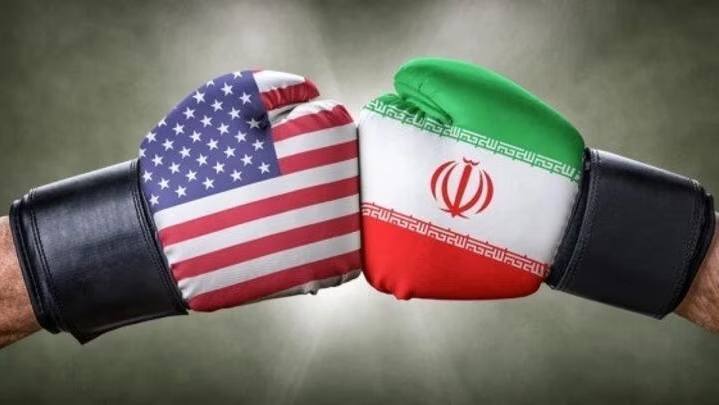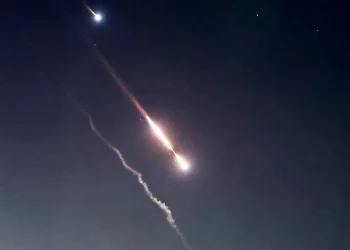In the wake of Iran and the US deal on the unfreezing of Iran’s assets and a prisoner exchange, speculation abounds concerning the potential domino effect this may have on the trajectory of nuclear negotiations. Concurrently, there is stipulated case-by-case cooperation between Iran and the International Atomic Energy Agency (IAEA), a process which became operational post late-May.
On Monday, 14th of August, Karine Jean-Pierre, the White House Press Secretary, addressed a query regarding the issue of prisoner swap with Iran. She asserted that this matter is entirely separate from other discussions, including those concerning nuclear negotiations. She further elaborated, “We have not changed any aspect of our overall approach as it relates to Iran, which continues to be focused on deterrence, pressure, and diplomacy.”
The following day, the US Secretary of State, Anthony Blinken, echoed these sentiments during a press conference. He reiterated, “Nothing about our overall approach to Iran has changed. We continue to pursue a strategy of deterrence, of pressure, and diplomacy. We remain committed to ensuring that Iran never acquires a nuclear weapon.” He also mentioned that the US government could not verify media reports suggesting a deceleration in Iran’s accumulation of highly enriched uranium.
Historically, the US diplomatic corps had been assertive in its claims that there was no talks concerning the nuclear agreement with Iran. Indeed, while the current US administration has categorically deemed the withdrawal from the JCPOA under former President Donald Trump a significant misstep, they appear to follow a similar approach.
The inclination of the Biden administration – claiming a desire to revert to the initial agreement with Iran, with minor amendments – encountered resistance from Iran in forging a novel agreement. During the Biden tenure, the intermittent and ceaseless amplification of US economic sanctions impinging upon Iran, alongside diminishing benefits of the nuclear agreement, have emerged as formidable obstacles in the negotiation process. One must not overlook the role of sweeping changes within the domestic, regional and global contexts for the negotiating parties.
The process of previous negotiations
Commencing in April 2021, the preceding series of nuclear talks between Iran and other signatories to the 2015 nuclear pact, and the United States, continued unabated up until September 2022. This period witnessed negotiators twice inching toward the precipice of clinching a deal. In March 2022, after Russia invaded Ukraine, Moscow demanded a written assurance from the US, ensuring the sanctions would not perturb the economic interface between Iran and Russia. Later, between August and September 2022, the agreement neared fruition, owing to the exchange of explicit terms and conditions between Iran and the United States—this promised an imminent agreement, yet swiftly dwindled into disappointment.
Post termination of this negotiation circuit, Washington unilaterally asserted that the concluding text relayed to all parties was non-negotiable—either to be accepted or to prompt a declaration of failed negotiations. This claim faced repudiation from Iran. Tehran clarified that the ongoing disputes on several significant issues precluded them from discussing the finalization of the Vienna agreement as yet. Iran’s proposition, delivered through the European Union representative to Washington, met with indecision and the statement that it was under consideration. Consequently, Robert Malley, the then US special envoy for Iran, refrained from broadcasting a failure of negotiations, pronouncing instead that an agreement would follow only after consensus on all issues.
The indirect dialogues that inaugurated in Oman this spring marked a resurgence of diplomacy between the US and Iran following several months of dormancy. However, these discussions revolved around the prisoner exchange and the release of Iran’s financial resources. With the culmination of the exchange agreement, certain quarters propose the prospect of extending this accord to nuclear negotiations. This viewpoint is predominantly put forth by the intermediaries involved in the recent dialogues between Iran and the US. Qatari officials have intimated their efforts to disaggregate the disagreements between Iran and the US into separate cases in order to facilitate a step-by-step resolution. This stratagem is reminiscent of the policy employed by Barack Obama, who aimed to disentangle issues and negotiate separately on Iran’s nuclear program, regional policy, and weaponry programs. However, observers of the nuclear negotiations articulate a starkly divergent climate compared to the previous period of discourse.
Rationale for complex negotiation calculations
During the course of the 2020 presidential campaign, Biden reflected upon the policies of his predecessor Trump, casting them in a critical light, while concurrently pledging to reinvigorate the nuclear accord with Iran. Yet, Washington’s desultory pace and heightened aspirations regarding the JCPOA have created a chasm between the promised goal and its realization. This manifested in the form of several impediments erupting along the path of nuclear negotiations and agreement, thereby amplifying the complexities of Washington’s negotiation related predicaments. Contributory elements of this convolution include internal protests within Iran, the unfolding war in Ukraine, vacillations and inertia of the European Union, and the ambient uncertainty encircling the trajectory of Iran-Russia relations. Each of these factors further propagated hesitation within the US concerning the benefits of the agreement.
Particularly, considering the diminishing returns of the JCPOA, any prospective agreement would necessitate further concessions to Iran, thus demanding more in reciprocity. The irreversible strides made by Iran in its nuclear program, thus escalating its potential to sidestep any impending agreement failures, has provoked palpable apprehension for the United States. This dynamic somewhat curtails the ability of Washington to default or renege on any prospective agreement.
Conversely, on the cusp of the US presidential election, negotiating any sort of agreement is perceived to be a more costly endeavor for the Biden administration than reneging on previous electoral commitments. Concurrent crises like the unfolding situation in Ukraine, the security of NATO allies and exacerbated tensions with China would invariably dilute the emphasis on nuclear negotiations with Iran in electoral campaigns and discussions. The Biden administration’s focus on the nuclear agreement may have waned, however, this does not indicate the omission of the issue from their agenda. Instead, Washington is acutely aware that the original agreement may either be unattainable or an enormously demanding prospect for the United States. Given these considerations, there is an apparent need for Washington to re-evaluate the terms of negotiations or any potential agreement.
Attributed to the aforementioned rationale and the recent testimonies from White House officials, it appears that Americans retain faith in their capacity to construct a favorable launching pad in the negotiation landscape with Iran, utilizing a high-pressure approach – albeit one laden with risk. This American tactic could be deciphered as an attempt to either redirect the game to a different arena or to broaden the expanse of the existing playing field. US policy in the Persian Gulf can certainly be perceived as a constituent piece of the intricate puzzle that the US is assembling for Iran. Concurrently, this policy assists the White House in weathering domestic political storms regarding the recent agreement and providing some inoculation against unforeseen challenges ahead of the US presidential election. It is clear, therefore, that though the White House’s overall approach remains largely unchanged, its tactics have undergone a transformation. Above all, Washington continues to favor discreet, back-channel agreements and understandings, an inclination also evident in Qatar’s strategy.
Nonetheless, amidst these convolutions, there exist parallel opportunities for Iran to carve its own significant roles in both regional and international politics. This would undeniably bolster Iran’s bargaining position in nuclear negotiations. As a concluding remark, it should be noted that, as the negotiation hiatus prolongs, augmented mutual comprehension between negotiating parties, coupled with probable shifts in the regional and international landscape, one can expect future negotiations to be a highly intricate and challenging dance.






